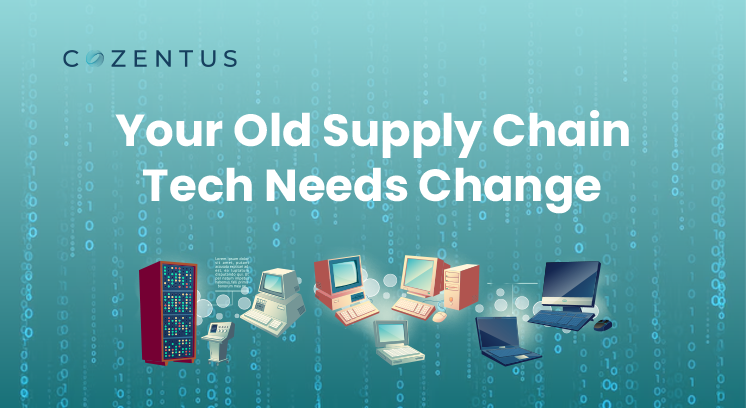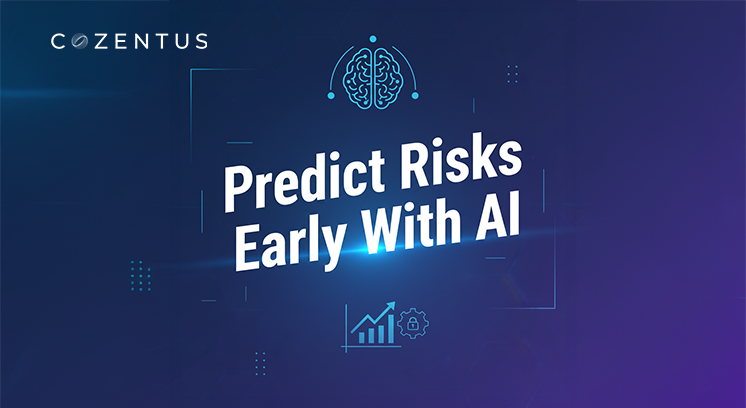Retail organisations must strive for supply chain visibility. However, visibility may signify various things depending on the circumstances and the firm in the issue. We will explain supply chain visibility and the many forms of supply chain visibility solutions that bring value to retail organisations to help you define what it means for your retail company.
Predictive analytics is used to assist in anticipating occurrences, avert risks, and finding solutions to various aspects of company operations and procedures. Forecasting future supply chain and logistical events allows businesses to obtain a competitive edge and avoid financial loss due to erroneous stocking and mismanagement of items, delivery, and time.
According to Forbes, supply chain efficiency is critical. Inventory management, selecting, packaging, and shipping are all time and resource-intensive procedures that may have a significant influence on a corporation's bottom line.
Major corporations such as Apple, Amazon, and Whole Foods are already reaping the benefits of using predictive analytics to streamline supply chains and logistics. Other firms are following their lead and using predictive analytics in both small and large-scale operations to enhance forecasting and responsiveness via real-time analytics.
What Does Supply Chain Visibility Imply for Retailers?
Who you ask determines the concept of retail supply chain visibility. Many retail organisations may define supply chain visibility solutions as merely monitoring the location and status of shipments to determine when they will arrive. Visibility may also imply the capacity to monitor a shipment's conditions while it is en route for organisations sending perishable or delicate items. In other circumstances, supply chain visibility may include seeing the shipping procedures that comprise a supply chain so that they may be examined and improved.
Whatever supply chain visibility solutions mean for your business, the advantages of supply chain visibility are apparent. The benefits of supply chain visibility for retail organisations are many and enormous, ranging from making inventory management simpler to preventing supply chain interruptions.
Retail Supply Chain Visibility Types
Retail supply chain visibility is divided into five groups.
Follow and Trace
Monitoring and tracing transportation visibility allows businesses to track the location and status of their goods. Track-and-trace capabilities, perhaps the most accessible and fundamental sort of retail supply chain visibility, answer the issues of where your cargo is and when it will arrive—both critical questions regarding retail supply chain management.
Visibility of Shipment Condition
Shipment condition visibility enables businesses to monitor the state of their items while en route and is critical for businesses sending perishable or delicate goods. With shipment condition visibility, companies can monitor cargo conditions such as temperature, humidity, shock absorption, and light exposure in real-time supply chain visibility.
Visibility of Data and Analytics
Visibility of data and analytics gives insight into indicators such as carrier performance, carrier KPIs, shipping expenditure, and other variables ordinarily available via a transportation management system (TMS).
Visibility of Insider Shipping
Insider shipping insight provides firms with a deep knowledge of their supply chain activities by offering visibility into shipping processes.
Visibility of Capacity
Capacity visibility gives insights into a company's carrier partners' capacity and the capacity of its supply chain as a whole, allowing businesses to guarantee that there is always room available for their goods.
Why Is Inventory Visibility in Supply Chain Management Important?
In general, inventory in the supply chain is divided into two categories: raw materials and completed commodities.
The time it takes for raw materials to enter your warehouse, be processed into completed items, and be sent to the client is referred to as "turnover." You want as many inventory turnovers as possible in a given period. Identifying obstacles in moving those commodities into and out of your warehouse fast is crucial to speeding inventory turnover and enhancing inventory efficiency.
Having enough inventory to enable timely fulfilment of client orders is critical for any product-based organisation. It's vital that many businesses pay exorbitant warehouse fees to store more goods than they need at any moment. It is referred to as safety stock. While safety stock guarantees that companies always have enough supplies on hand to fulfil consumer demand, it is prohibitively expensive.
As modern supply chain technology allows businesses to adopt leaner processes, real-time supply chain visibility in transportation will enable enterprises to keep lower safety stock levels while still meeting and surpassing consumer expectations.
Why is Retail Supply Chain Management Dependent on Visibility?
Retail firms benefit significantly from supply chain visibility. To begin with, retail organisations' capacity to monitor their freight's location and the condition is critical. For starters, reliable forecasting of when new items will arrive at your warehouses is required for successful inventory management.
You can see and respond to anomalies by monitoring your shipments in real-time before they cause costly delays. Customers could be sent alerts in the case of any unusual occurrences. For example, if a warehouse anticipates severe snowfall in their delivery zone, they may inform consumers of a 2-3 day delay. Depending on your industry, it may be preferable for clients to be pleasantly pleased rather than taken off guard when their product fails to arrive on time.
Meanwhile, shipping condition visibility is crucial for any organisation that exports perishable or delicate items. For example, a retailer selling frozen items must guarantee that its shipments are preserved at particular temperatures.
On the other hand, a glassware manufacturer may need to ensure that its shipments are not subjected to excessive shock. Companies sending delicate or perishable goods may use real-time supply chain visibility tracking to determine whether their shipments have been damaged and adapt their inventory management strategy appropriately.
Other visibility, such as data and supply chain predictive analytics, insider shipping, and capacity visibility, may help retailers manage their supply chains. Visibility into carrier performance, for example, enables retailers to negotiate better contracts with carriers, while visibility into shipping procedures enables businesses to detect inefficiencies in their supply chain.
What Predictive Analytics Can Do for Supply Chain and Logistics
Supply chain predictive analytics enhances the supply chain and logistics industries by effectively collecting and analysing data that aids management choices. It may also help resolve difficulties such as damaged inventory, stock mistakes, and supply and demand miscalculations. Predictive capabilities enable firms to accurately handle customer service and traffic patterns, labour unrest, and meteorological occurrences impacting shipping and port activity.
Organisations may use predictive insights for supply chain and logistics in the following ways:
Transportation Management Systems: Supply chains rely on defined lead times, and uncertainty for elements such as ocean shipping may be managed by forecasting future interruptions.
Third-Party Logistics: Supply chain predictive analytics may provide value by forming strategic alliances with technology providers to use Big Data for their services.
Industrial Procurement: Retailers and distributors may plan inventory and shipments months to assist their suppliers in planning lists and loads based on consumer demand and purchasing behaviour.
Customer Visibility: Organisations may get market insights about their consumers, suppliers, and trade partners, as well as seasonal purchase trends and consumer projections, to make faster and more informed choices.
Product and content placement: Businesses may better plan for short-term behavioural changes that influence supply chain and logistics, such as news, weather, shortages, and manufacturing promotions. They may better adapt site merchandising in reaction to certain time-sensitive events by using predictive analytic algorithms to identify unanticipated scenarios.
Improved B2B Personalisation: Predictive analytic models may be utilised to guarantee that clients get the appropriate seasonal items depending on geographical location. A model may identify changes that may demand marketing modifications based on geographic location.
Predict supply and demand: Supply chain predictive analytics assures minimal waste and on-time delivery during peak demand periods.
Predictive Maintenance: This is a technology-focused term widely used in supply chain logistics, especially in operations that concentrate on picking and packing throughout fleets of transport ships and trucks.
How Major Corporations Use Predictive Analytics
Large corporations use supply chain predictive analytics to optimise their supply chain and logistics to the smallest detail. They are raising the standard for how businesses use predictive analytics and making advances that fuel company success.
Apple and the Supply Chain Model: They use forecasting skills to get real-time insight into demand trends, predict online purchases for items such as the Apple Watch and iPhone, and avoid delayed delivery.
Amazon and Whole Foods: Amazon purchased Whole Foods to access actual stores, their customers, and the associated data. Employing real-time data, they are using predictive analytics to improve supply chain analytics in anticipatory shipping and stocking. They're making shopping easier for customers and suppliers while also helping cut food waste in the United States.
Capabilities for Accurate Forecasting
Predictive analytics enables firms to enhance key supply chain and logistics performance indicators. Predictive analytic models can anticipate everything from delivery management to product costs, order lifecycle, goods movement, shipping and storage expenses, inventory management, and customer service.
Research Optimus (ROP) is a significant worldwide research and analytics business that provides predictive analytics solutions to assist firms in improving and becoming more robust in their Supply Chain and Logistics management operations. Companies may use ROP's specialised forecasting capabilities to correctly anticipate behaviours, trends, and events that affect their profit and core performance.
Wrapping Up
At its heart, supply chain analytics transforms whole data sets and incoming current supply chain information into valuable insights for optimum planning choices to boost supply chain efficiency.
The number of organisations utilising real-time transportation visibility platforms (RTTVPs) to simplify their operations has increased unprecedentedly in the last year. Above is the ultimate guide to understanding, adopting, and reaping the benefits of your firm's real-time transportation visibility software and technology. In addition, we discussed some significant challenges.
Cozentus, with its advanced technology in supply chain visibility solutions, assists organisations across industries in optimising and monitoring their logistics processes, achieving cost efficiency, and reducing delivery turnaround time. Sign up for a brief demo to see how it can be a game changer for your company.
Recent Post
Subscribe to our newsletter
Stay updated on latest trends and news in the supply chain and logistics industry
Join our mailing list for monthly updates
Download Reports
AI-Powered Intelligent Document Processing -Your Launchpad to Digital Transformation
Download






